List of Authors
>>About this blog
Recent blog post
|
[rosemary sea]
July 24, 2016 09:00
It is rosemary sea, which covers "gifts and enjoy yourself" as a range.
When I am very tired, I come to amazake Yokocho.
We visited Futaba of Tofu in Yokocho, Ningyocho, amazake.
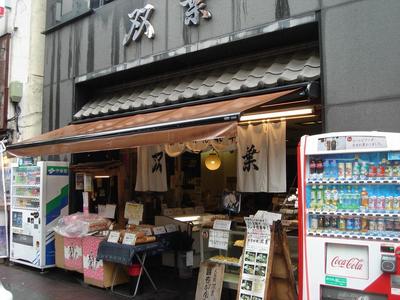
Now, in addition to products such as tofu and ganmo, there are amazake and tofu donuts that were not introduced last time.
I'll introduce you from amazake.
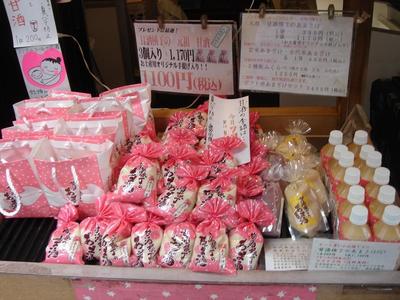 The name of amazake Yokocho is derived from the sweet liquor store called Owariya in the early Meiji era, which was located on the south side of the entrance of Yokocho, at the present Kyo confectionery Gyokueido (in front of Futaba's name). The name of amazake Yokocho is derived from the sweet liquor store called Owariya in the early Meiji era, which was located on the south side of the entrance of Yokocho, at the present Kyo confectionery Gyokueido (in front of Futaba's name).
Yokocho at that time was located on the south side, and it was said that the road width was narrow.
The land readjustment after the Great Kanto Earthquake has become the current width, and the name is also known as "amazake Yokocho".
The origin of amazake itself dates back to the Kofun period, and in Chronicles of Japan, there is a description of Amanotamuzake, the origin of amazake.
・・・ It's quite desensible, but in short it's an ancient Japanese drink.
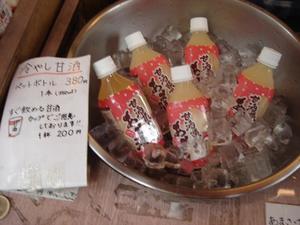 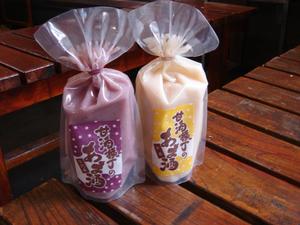 amazake contains enough nutrients to be called 'drink'. It's a nutrient to drink. It seems that there was an image of a hot drink in winter, but the effects of summer batter measures, fatigue recovery, and beauty have been recognized for a long time. It has been attracting attention in recent years, but in Haiku it is a seasonal word for summer (July). In the past, amazake's peddling was common in summer. amazake contains enough nutrients to be called 'drink'. It's a nutrient to drink. It seems that there was an image of a hot drink in winter, but the effects of summer batter measures, fatigue recovery, and beauty have been recognized for a long time. It has been attracting attention in recent years, but in Haiku it is a seasonal word for summer (July). In the past, amazake's peddling was common in summer.
In amazake, there are amazake made from sake cake and amazake made from rice koji. Be careful if you are not good at alcohol because amazake liquor contains alcohol. On the other hand, rice koji amazake is made by fermenting koji, and sweetness comes out at the fermentation stage, so no sugar is used, of course, non-alcoholic.
Tofu's amazake is amazake, an original brand of amazake Yokocho, and amazake made of koji from the United States, which is now attracting attention.
I asked the wife of the shop. "Our amazake is ordering production from the Izu factory. Some are made from Shiga rice, ancient rice and brown rice (top). "
This is the person who drinks amazake's food repo. I had "Amazake (cup) that can be drunk right away".
"I was able to feel the true sweetness of rice and the sweetness of nature."
Next is soy milk donut.
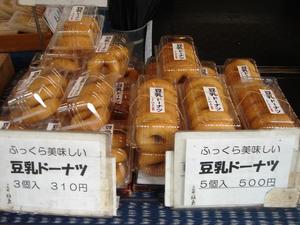 It seems that they use fresh soy milk made first in the morning. A healthy snack. It's popular because it's not too sweet. It seems that they use fresh soy milk made first in the morning. A healthy snack. It's popular because it's not too sweet.
Finally, the wife of the shop talks about the customer.
"It's a cycling tour, some people come by every day. I hear it's an energy charge here. ・・ ・ A foreign woman who came every day for three days while staying at a nearby hotel to eat jumbo cancer and soy milk donuts. When I talked in English, I was not good at it, vegetarian, and I came to my house because there was nothing I could eat at the hotel due to dietary restrictions. There are some foreign couples who eat at home. amazake explains in English "Farmen Ted Rice (fermented rice, translated directly: fermented rice)", but it seems to pull it once. amazake soft serve ice cream is more popular among foreigners. ・・ ・ And there are some Taiwanese people who visit the "Newcomer" location. "
By the way, Mr. HK, a correspondent, gave me an appropriate translation of "amazake a sweet drink made from fermented rice." Thank you, Mr. HK.
2-4-9, Nihonbashiningyocho 03-3666-1028
From Monday to Saturday 7:00 to 19:00, 10:00 to 18:00
Open all year round
Click here for Tofu's Futaba's homepage ⇒ http://tohutaba.com/
[rosemary sea]
July 19, 2016 16:00
It is rosemary sea, which covers "gifts and enjoy yourself" as an ad balloon.
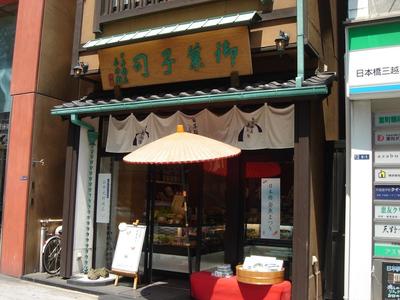
Today, at the offer of Mr. S Fuji at the workplace, we visited Nihonbashi Yachobei Nihonbashi Main Store, a Japanese confectionery. Thank you very much for your help. In addition to sticking to the original taste of Japanese sweets, its beauty and seasonal atmosphere are also valued. Anyway, please take a look at the product.
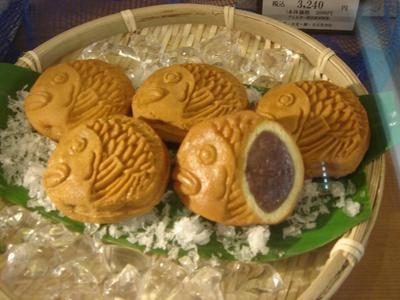
It is the standard "Tenka Taihei" from annual products. It is a bun made by wrapping a smooth koshi bean paste with a solid dough and baking it. It seems that he repeated subtle adjustments to the amount of sugar. Also, it is said that koshi bean paste is the best to make it beautiful. It seems that red beans are made from Hokkaido like mizuyokan.
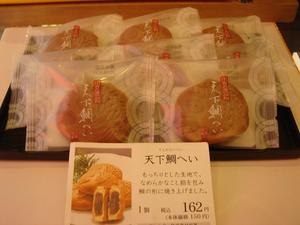
Here is Mr. S Fuji's food repo.
"The shape of a round and cute sea bream. You're lucky. It's also great for celebrations. My daughter and wife bought me when my child was born. The taste is not too sweet. It's better to eat lightly."
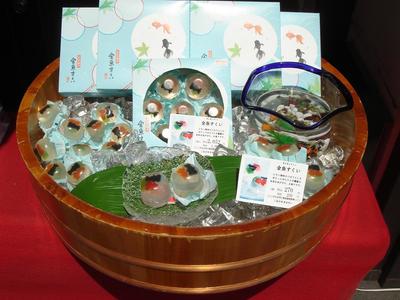
"Goldfish scooping" is a seasonal product. Very beautiful and cool sweets.
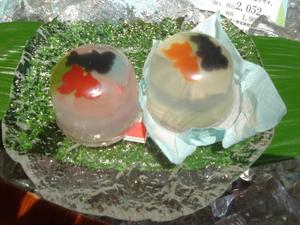
If you enter the tray and decorate it in front of the shop, you will really feel like you can enjoy goldfish scooping. It's also piled up in the shop.
Goldfish made of yokan is contained in lemon-flavored jelly.
It will be sold until early September (Nihonbashi Main Store only).
↓ The best gift is Mizuyokan set, which is the best gift. Since it is a seasonal product, it is until mid-August.
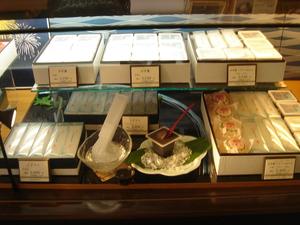
Here is Rosmali's own food repo.
"It's not too sweet, but very smooth texture. It's smooth, so if you cool it down, the taste will be enhanced. It's a great feeling of coolness."
On the left, there's a lot.
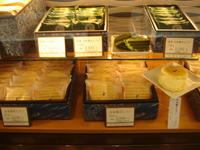 This is Nihonbashi Senbei. This is Nihonbashi Senbei.
"Nihonbashi" Naming with the title.
It contains cream with moderate sweetness in Western-style rice crackers with a crisp texture.
Nihonbashi Senbei itself is an annual product, but Matcha is scheduled to be sold until early November as a seasonally limited edition.
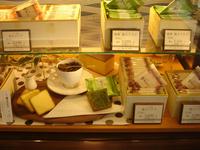
The left is baked castella.
It's butter flavor. This is also very fragrant and slightly salty.
The taste of castella is condensed tightly. It is an annual product, but this "matcha" will also be sold until late August.
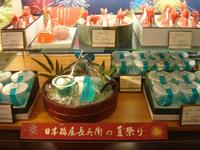 "Summer Festival" As a seasonal limit "Summer Festival" As a seasonal limit
Watermelon jelly (upper) and ramune jelly (lower).
The watermelon jelly takes care of the sweetness and flavor of the watermelon itself.
Lamune jelly contains apple-flavored jelly balls that resemble marbles in the taste of lamune.
There are also morning confectionery (Japanese sweets that you want to eat during that day).
1-6-2, Nihonbashimuromachi 03-3242-3030
Business hours 9:30 to 19:00
New Year holidays are closed only on New Year's Day
Click here for Nihonbashi Ya Chobei's website ⇒ http://www.nihonbashiya.jp/
[rosemary sea]
July 12, 2016 09:00
It is rosemary sea, which covers "gifts and I enjoy myself" as a territories.
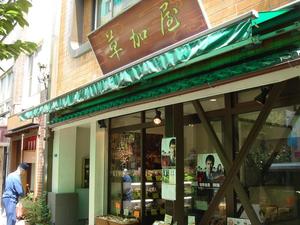 Today, I visited Ningyocho Kusakaya, a rice cracker shop in amazake Yokocho, Ningyocho. There is our owner at the left end of the shop. Today, I visited Ningyocho Kusakaya, a rice cracker shop in amazake Yokocho, Ningyocho. There is our owner at the left end of the shop.
Following the previous Yuma Nihonbashi, this is the second location tour of Keigo Higashino's novel and TV drama "Newcomer" and the novel and movie "Kirin no Tsubasa" about five years ago.
Even so, in order, Kusakaya appears in the first episode in both novels and dramas. In the future, I will continue to go around the location without keeping the order.
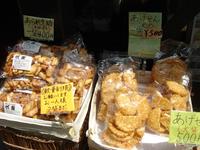 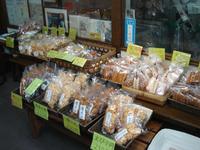
First of all, I would like to introduce them.
Hand-baked rice crackers
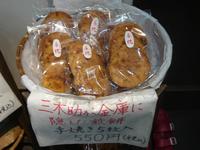 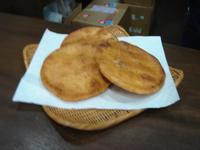 That hand-baked rice cracker that appeared in "newcomers" as a rice cracker "Amakara". That hand-baked rice cracker that appeared in "newcomers" as a rice cracker "Amakara".
Even now, the craftsmen bake each one with all their heart according to the manufacturing method at the time of its founding.
Mikisuke Katsura, the third generation, said that this hand-baked rice cracker was hidden in a safe so that his disciple could not eat it.
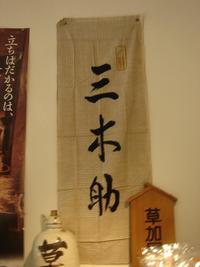
The origin of "Okoge" is that Kabuki's 17th generation Kanzaburo Nakamura, was told to burn this hand-baked rice cracker more when he was young.
Here, the food repo team in my workplace appeared.
Mr. Ikura. "It's light in a good sense, and it's not too hard. You can eat as many as you like."
Mr. F River. "It's very savory. The taste of soy sauce is irresistible."
Mr. Tsan, 3. "I'm not good at being too hard, but I can do it. The deep taste of soy sauce comes out of the nose. Harmony of rice and soy sauce."
In addition, okoshi, pepper, shrimp, blue seaweed, sesame, demon stick, hare Hisasuke, no raising ... I will see you.
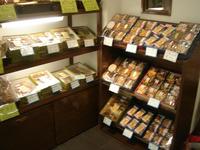 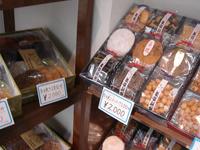 There is also a great deal. The sellers are hand-baked assortment (left in the photo on the right), hand-baked and okaki assortment (right in the photo on the right), both are 2,000 yen. There is also a great deal. The sellers are hand-baked assortment (left in the photo on the right), hand-baked and okaki assortment (right in the photo on the right), both are 2,000 yen.
Hand-baked rice crackers can also be wrapped in wrapping paper. I brought it to my husband.
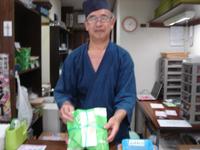
Well, this is the secret story of shooting "Newcomer" that I kept you waiting.
From here, the daughter of the shop mainly explained. Unfortunately, we couldn't appear in the photo.
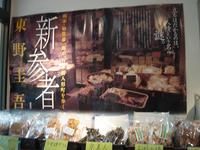 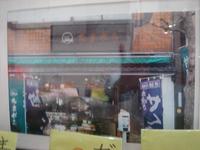 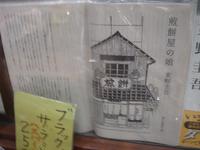
"When did you shoot 'Newcomer'? Other shops had a lot of sets, but we took them at the shop. Before the shooting began, Hiroshi Abe, the leading role, and Etsuko Ichihara, the role of grandma in Amakara, came to see and made preparations in advance. Both of you were very good. Of course, Takashi Kobayashi, the master's role, and Kyo, the daughter's role. However, Mr. Abe is natural. Our shop has a step of about 18 centimeters inside. If you take off your shoes here, your performance will be interrupted. Only when shooting, I pulled the mat so that I could go up all with my feet. After that, when recording other programs on the same TV station in the subsequent broadcast, Mr. Abe came and the other staff took off his shoes and went up, but only Mr. Abe was not on his feet. ・I don't think there was a bad mood."
"For about three months of shooting, there was a shooting here and there in Ningyocho. So even after our shooting is over, the actor staff said, "I'm sorry, please lend me a restroom." It's like that. It feels like a homey town is watching over you. (I agree with you, I love this town. "Rozmari"
"Mr. Higashino in Taiwan, dramas are popular. The books are also sold, and Mr. Abe is also very popular. People in Taiwan, the power of Asia is amazing, even now. The first customer in the morning is Taiwanese. ("Half is from Taiwan in the morning.") 」
"I also took a picture of" Kirin Tsubasa ", but it was only aired where it entered the shop. The rest is cut. Come with three trucks and replace the inside with the props you brought and the shop. I wanted to move every Saturday and Sunday for a month, replacing it with the fine sign of "Amakara". It was a moment."
"My family is a grandmother, dad and me (daughter), as in novels and dramas. But in novels and dramas, there is a scene where grandma gets sick. From others, "Grandma is okay?" That's different from the drama, but ... I was in trouble."
"Mr. Higashino, I came to the interview in advance. I didn't call myself, but I've been asking a lot of questions. In the novel modern era in 2004, about a year after the first episode appeared on the theme of "Daughter of a rice cracker shop", until the second episode began, but I thought I could read it out. One day, Kodansha contacted me that it would be a book, and this is the poster given at that time (upper left). After that, people from different customers are taking pictures from outside the shop. What are these guys? That was Mr. Higashino's novel fan. I want to make a drama immediately after that, I want to shoot ..."
2-20-5, Nihonbashiningyocho
At the intersection of amazake Yokocho, walk several tens of meters toward Hamacho Park and Meijiza. On the right side is Kameido, Ningyocho, famous for tile crackers. This is my synchronization, Mr. HK was introduced in May. Let's survive the summer with HK, Usako Tsukuda, Daruma, Cotton and New Face Power.
03-3666-7378
Business hours 9:00 to 18:00 (Saturday 17:00)
Sunday regular holiday
[rosemary sea]
July 8, 2016 09:00
This is a rosemary sea, which covers "gifts and enjoy yourself" as a plot.
From the viewpoint of quiet talk, art, and history, Eitaro Sohonbu cannot pass through.
Nihonbashi Main Store is a treasure trove of hot topics.
As in the previous time, "Eitaro Sohonho" will be called "Eitaro" with familiarity.
1.The story of a signboard
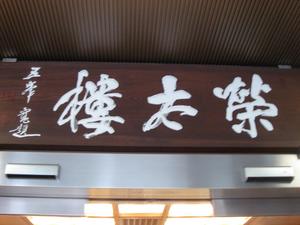 The current signboard is a calligrapher named Gomine Takabayashi-Takabayashigoho (1868-1947). In a rugged line book, the word "thick" is pedant of strangeness. The current signboard is a calligrapher named Gomine Takabayashi-Takabayashigoho (1868-1947). In a rugged line book, the word "thick" is pedant of strangeness.
It seems that the sign before this was written by Deishu Takahashi-Takahashi Deishu (1835-1903). Deishu Takahashi is a samurai and Shogunate who was called "late Tokugawa shogunate Sanshu" together with Kaishu Katsu and his brother-in-law Tesshu Yamaoka. He left many calligraphy as well as political aspects, and also played an active part in calligraphy appraisal. Katsu, he is not as famous as Yamaoka, but his swords and spears seemed to have considerable arms. It's a genuine "Last Samurai".
2.The Story of the Pine Mark
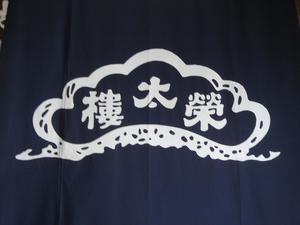 White letters on the dark blue background of goodwill. It's shaped like a pine. White letters on the dark blue background of goodwill. It's shaped like a pine.
It seems that the first Eitaro bought a villa one day. It seems that it was the former flagship house, but the pine that grew in that house was large, 6m high, 21m wide, and splendid like Kabuki Matsuhame (Matsuhame, Matsubame) It seems that it was. It was originally a pine that the flagship family worshiped by Shogun Tokugawa Iemitsu, a pine like a treasure.
Eitaro's mark is modeled on this pine tree.
3.The story of the store frontage
 When you enter the automatic door, a "stone" is embedded in it. It seems to be a stone from the time of its establishment. It's about the size of a cushion, but it's left to this day. When you enter the automatic door, a "stone" is embedded in it. It seems to be a stone from the time of its establishment. It's about the size of a cushion, but it's left to this day.
There is a silver line around this stone. It's about 4.5 tatami mats. It seems that this was the size of customers at the time of its founding, and it was quickly filled with people.
4.The story of "Picture 1"
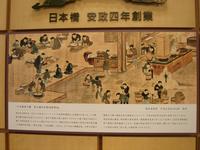
Immediately after entering the store, on the left wall is the "Japanese Confectionery Shop Eitaro Main Store Manufacturing Site" (Shinya Shibata-Shibata Shinsai painting) of Tangible Cultural Property, Chuo-ku.
The real thing is owned by Eitaro.
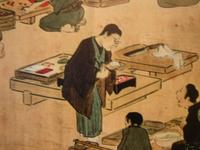 In 1885, the World Invention Expo was held in London in 1885, and Eitaro painted the factory to explain the process of making confectionery when exhibiting products. In 1885, the World Invention Expo was held in London in 1885, and Eitaro painted the factory to explain the process of making confectionery when exhibiting products.
The first man in a kimono in the left photo above, in the center of the screen, is Eitaro. In the upper right photo, it is in the center.
5.The story of "Picture 2"
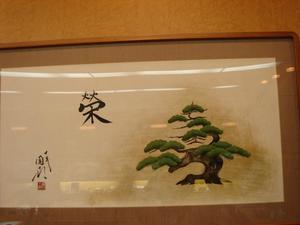 On the left wall at the back of the shop, a pine picture drawn by Danjuro Ichikawa (1946-2013) is displayed. It is a real picture connected to the Naritaya can of Umeboshi candy. On the left wall at the back of the shop, a pine picture drawn by Danjuro Ichikawa (1946-2013) is displayed. It is a real picture connected to the Naritaya can of Umeboshi candy.
What is interesting is that it is depicted as a pine picture "Kotobuki".
Because it is the real thing, appreciation is far away as a customer, but it is worth a look.
6.The story of "Picture 3"
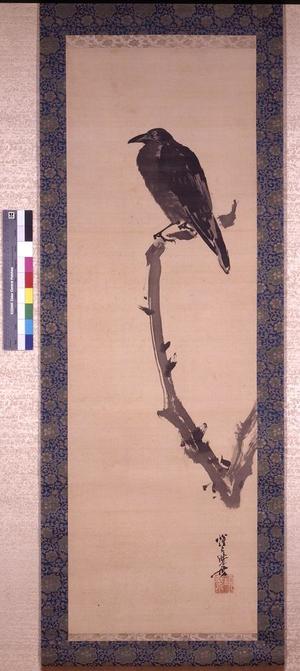 Although it is not displayed in the shop, we will introduce Eitaro's "Kobokukan Azu" (Kyosai Kawanabe-Kawanabe Kyosai-1831-1889 paintings). It's a picture of a crow. Although it is not displayed in the shop, we will introduce Eitaro's "Kobokukan Azu" (Kyosai Kawanabe-Kawanabe Kyosai-1831-1889 paintings). It's a picture of a crow.
I mentioned last time that Eitaro's sweet-name sugar won the honor prize at the 1st National Industrial Expo in 1877, but Kyosai Kawanabe exhibited this picture in the second installment four years later, and won the second prize in Japanese painting.
Xiaosai put this work at an exceptional price of 100 yen at the time, and was criticized for being too expensive, and said, "This is not the price of crows, but the value of many years of art training." The first Eitaro felt enthusiasm for this and purchased it for 100 yen, and this was stated in the newspaper at that time, "Buy a picture of Eitaro's master, Xiaosai." It seems that there was an interview from various places.
By the way, the Kawanabe Kyosai Memorial Museum in Warabi City, Saitama Prefecture also uses seals that imitate this picture.
※ This image was provided by Eitaro Sohonho.
Eitaro Sohonbu Nihonbashi Main Store
1-2-5, Nihonbashi
03-3271-7785
Business hours 9:30-18:00 (Mon-Sat)
Regular holidays: Sunday and public holidays
Click here for Eitarou Sohonbu's website ⇒ http://www.eitaro.com/
[rosemary sea]
July 2, 2016 09:00
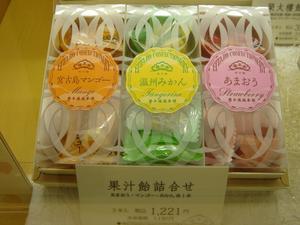 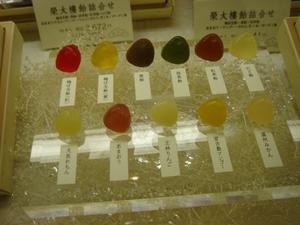 This is the rosemary sea, which covers "gifts and enjoy yourself" as an idea. This is the rosemary sea, which covers "gifts and enjoy yourself" as an idea.
Introducing the three products that were missing last time by Eitaro Sohonho.
3.The story of fruit juice candy
It appeared in 2013. Collaboration product with Nepure Co., Ltd. Evolutionary system of the Eitaro candy series.
Nepure (nepuree). New processing technology that "do not cut" or "do not crush" fruits, which are materials. Since it does not damage the cells of the material, it is suitable to make it puree without damaging the taste, nutritional value and aroma of the material. Overheating steam treatment of 370 degrees + centrifugal force. Fruit candy with the original sweetness, aroma, and vivid colors of the juice were created without using coloring or fragrance. I don't rely on any additives.
Juice candy won the 2012 Food Action Nippon Award Food Category Excellence Award.
4.The story of Amana sugar
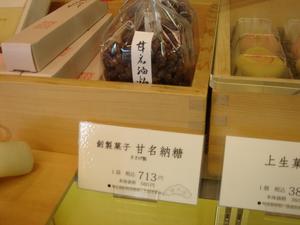 Click here for the ancestor of Amanatto. The first generation Eitaro devised it as a confectionery for the common people. Click here for the ancestor of Amanatto. The first generation Eitaro devised it as a confectionery for the common people.
Received the honor prize at the 1st National Industrial Expo in 1877.
In 1921, Emperor Showa ordered his visit to Europe during his time of the Crown Prince.
Japan's first sweet natto, Amana sugar. Even Eitaro is sold only at Nihonbashi Main Store. This is a chakichaki Edo sweets born at the side of Edo Nihonbashi.
Everything is manufactured by hand and does not use machines.
※ I'm particular about beans.
That said, it's not just a matter of thorough sorting.
We have been using Kintoki Sasage consistently from the beginning.
The feature of this bean. It has a hard surface. Even if boiled, the skin does not break and "I do not cut my stomach = I do not cut my stomach (the samurai hates) = good luck." That's why it's also used for red rice. The red beans are torn.
That's not the only thing. Hard means that when pickled in honey, even if the outside becomes sweet, it does not become too sweet to the core. With other beans, the whole becomes sweeter. This is not good.
At that time, they used Kawagoe products from Musashi Saitama, and in recent years they purchased Okayama products. Now expensive beans.
I'm sucking the sweetness moderately.
※ The origin of the name.
Lake Hamana's specialty "Hamana sugar bean" is named Amana sugar.
Actually, the first friend advised the first generation to name it, and the first one decided.
After that, in the streets, Dainagon red beans ("Donagon"), quail beans, hide beans, etc. became used as raw materials, and similar sweets called Amanatto were made.
Eitaro protects the appearance at the time of its creation correctly.
5.The story of Black Karinto
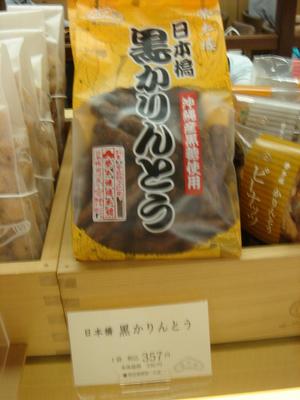
In May 2011, this karinto appeared in the drama "JIN-Nin" of Nippon Television.
At the time of the broadcast, it was released as JIN's Karinto in collaboration with Seven-Eleven, and it was an explosive sales. I heard that the factory screamed at a sudden inquiry.
The package is different from the collaboration product 5 years ago, but the taste of Karinto does not change.
Eitaro Sohonbu Nihonbashi Main Store
1-2-5, Nihonbashi
03-3271-7785
Business hours 9:30-18:00 (Mon-Sat)
Regular holidays: Sunday and public holidays
Click here for the website of Eitaro Sohonho.
⇒ http:www.eitaro.com/
1
|
Links
|
 The name of amazake Yokocho is derived from the sweet liquor store called Owariya in the early Meiji era, which was located on the south side of the entrance of Yokocho, at the present Kyo confectionery Gyokueido (in front of Futaba's name).
The name of amazake Yokocho is derived from the sweet liquor store called Owariya in the early Meiji era, which was located on the south side of the entrance of Yokocho, at the present Kyo confectionery Gyokueido (in front of Futaba's name).
 amazake contains enough nutrients to be called 'drink'. It's a nutrient to drink. It seems that there was an image of a hot drink in winter, but the effects of summer batter measures, fatigue recovery, and beauty have been recognized for a long time. It has been attracting attention in recent years, but in Haiku it is a seasonal word for summer (July). In the past, amazake's peddling was common in summer.
amazake contains enough nutrients to be called 'drink'. It's a nutrient to drink. It seems that there was an image of a hot drink in winter, but the effects of summer batter measures, fatigue recovery, and beauty have been recognized for a long time. It has been attracting attention in recent years, but in Haiku it is a seasonal word for summer (July). In the past, amazake's peddling was common in summer. It seems that they use fresh soy milk made first in the morning. A healthy snack. It's popular because it's not too sweet.
It seems that they use fresh soy milk made first in the morning. A healthy snack. It's popular because it's not too sweet.

























 In 1885, the World Invention Expo was held in London in 1885, and Eitaro painted the factory to explain the process of making confectionery when exhibiting products.
In 1885, the World Invention Expo was held in London in 1885, and Eitaro painted the factory to explain the process of making confectionery when exhibiting products.






